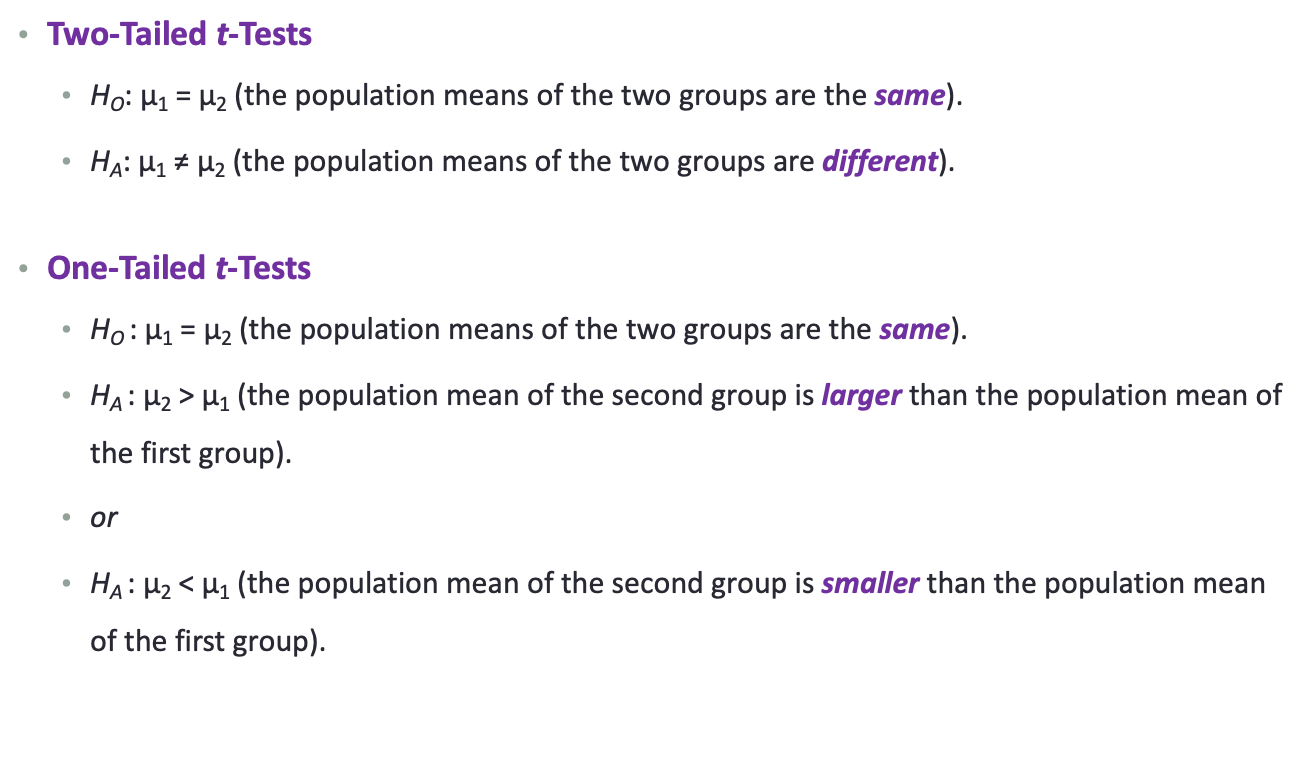Two Samples Independent/Unpaired Groups t-test for Continuous Data
1/7
There's no tags or description
Looks like no tags are added yet.
Name | Mastery | Learn | Test | Matching | Spaced |
|---|
No study sessions yet.
8 Terms
When is the two sample (independent groups) t-test used?
To determine whether the unknown means of two populations are different from each other based on independent samples from each population
What can the samples for a two-sample t-test be obtained from?
A single population that has been randomly divided into two subgroups, with each subgroup subjected to one of two treatments or
From two separate populations (eg. Male and female)
In either case, for the two-sample t-test to be valid, it is necessary that the two samples are independent (ie. Unrelated to each other)
What are the design condsiderations (assumptions) for two samples independent t-tests?
Quantitative data must be continuous ratio/interval as means are compared
The subjects are randomly selected from the same population or randomly selected from two separate populations
Assumes normality
Samples with equal variance
What are two-sample t-test hypotheses?
Non-directional test = different
Directional test = same

How do you report the results of an independent samples t-test?
Method:
A two-sample independent (unpaired) student's t-test was performed to test the hypothesis that the mean number of days taken to recover from malaria with Drug A was the same as that for drug B
Results:
The test of normality using Shapiro-Wilks statistic confirmed the data, recovery time in days for Drug A and Drug B has a normal distribution (W(8)=0.964, P=0.843, W(7)=0.953). Levene's Test for Equality of Variances (F=1.82, p=0.200) showed equal variances. An independent samples t-test indicated that the mean difference (3.38) between drug A (mean=23.38, SD=4.17, N=8) was not statistically different from that of Drug B (mean=20.0, SD=2.45, N=7), t(13)=1.87, p=0.084, using a two-sided test. Therefore, it can be concluded that there is no significant difference between Drug A and Drug B in recovery times
What happens when you test the hypothesis in one direction?
For instance, we may have had prior knowledge that told us that we expect Drug A to be better treatment and so we expect Drug A to result in taking fewer days to recover from malaria
Never just look at your dependent variable data and use these as evidence to carry out a one-tailed test, it simply increases the chance of you incorrectly rejecting the null hypothesis (type 1 error). A one tailed test needs to be planned in your research protocol

How do you perform a one tailed test for independent samples t-test?
Simply read the significance value (p-value) for one-sided p from SPSS output (p=0.042)
By using a one-side test, we now have evidence to reject the null hypothesis, since the p-value (0.042) is less than alpha 0.05
What are the two-sample t-test cautions?
Don’t misuse the two-sample t-test such as: comparing paired subjects, comparing to a known value
Preplan directional one-tailed t-tests with strong evidence
Small sample sizes make normality difficult to assess (outliers can be a problem)
Performing multiple t-tests causes loss of control of the experiment-wise significant level (ANOVA)